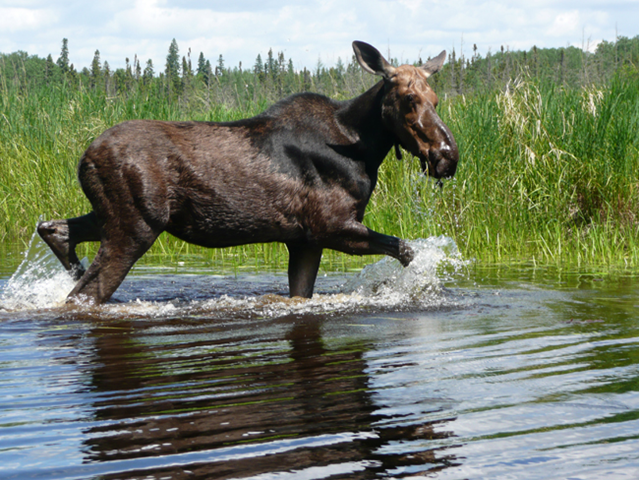

| Visitors Now: | |
| Total Visits: | |
| Total Stories: |

| Story Views | |
| Now: | |
| Last Hour: | |
| Last 24 Hours: | |
| Total: | |
Minnesota moose population plummets, as ticks eat them alive in warmer climate – ‘The moose population has been in decline for years but never at the precipitous rate documented this winter’
By Deborah Zabarenko, Environment Correspondent; Editing by Doina Chiacu
9 February 2013WASHINGTON (Reuters) – The population of moose in northeastern Minnesota dropped by 35 percent since last year, prompting state officials to cancel this year’s fall hunt and conservationists to blame warming temperatures for the massive creature’s decline.
“The state’s moose population has been in decline for years but never at the precipitous rate documented this winter,” Tom Landwehr, Minnesota’s Department of Natural Resources commissions, said in a statement Wednesday.
This year’s drop in population continues a steep trend, the state said. Since 2010, the number of moose has declined by 52 percent. Based on an aerial survey taken in January, the new population estimate is 2,760 animals, down from 4,230 in 2012 and 8,840 in 2006.
Minnesota set biological and management thresholds for closing the hunting season, and those thresholds have not been reached. State officials decided to close the season anyway because of the steep drop in population.
The moose population in Minnesota’s northwest collapsed a few years ago, and moose numbers in New Hampshire are also on the wane, while the horse-sized animal’s numbers are growing in parts of North Dakota.
To figure out why so many moose are dying, Minnesota wildlife researchers are fitting 100 moose with GPS tracking and data collection collars.
Doug Inkley, a wildlife biologist and senior scientist at the National Wildlife Federation, said climate change is a factor.
“Moose are big animals and need cold environments; they easily get heat stress,” Inkley said in a telephone interview. “When it gets too warm, they seek shelter and that means they’re not eating. When their nutritional status declines, they become more vulnerable to disease and parasites.”
Moose populations in New England were decimated over the last two centuries by over-hunting and the loss of habitat, Inkley said. Warming temperatures in this region and others increase the threat to moose from ticks, which can virtually eat the big creatures alive.
In a normal year, moose in New Hampshire have to deal with 30,000 ticks at a time, but recent warm years have increased the tick population, so moose have to cope with as many as 150,000 insects at a time, Inkley said in a blog post.
Moose with this many blood-sucking ticks can die of anemia. After the unseasonably warm winter of 2011, New Hampshire researchers said it was possible that all moose calves born the previous year had died, in addition to 40 percent of adults. [more]
Minnesota moose population plummets, activists blame climate
2013-02-16 05:51:28
Source: http://www.desdemonadespair.net/2013/02/minnesota-moose-population-plummets-as.html
Source:



